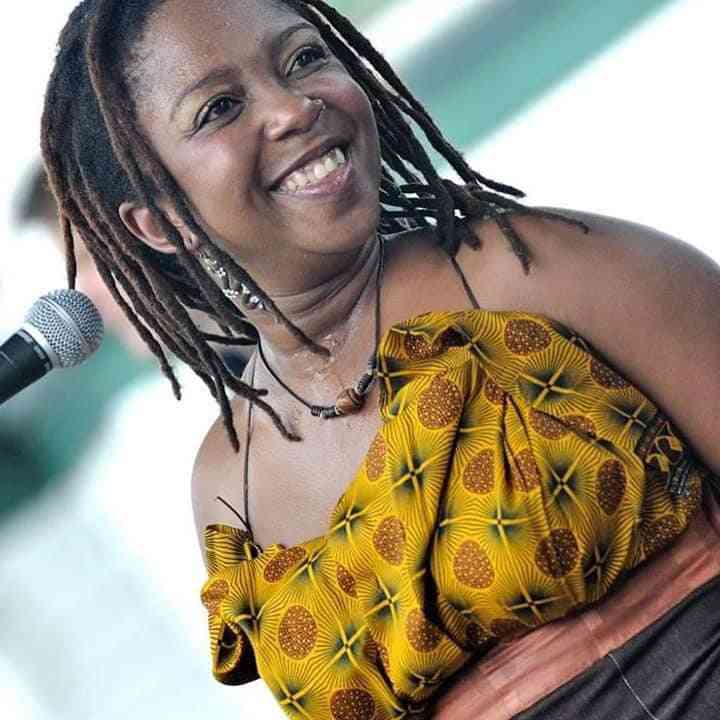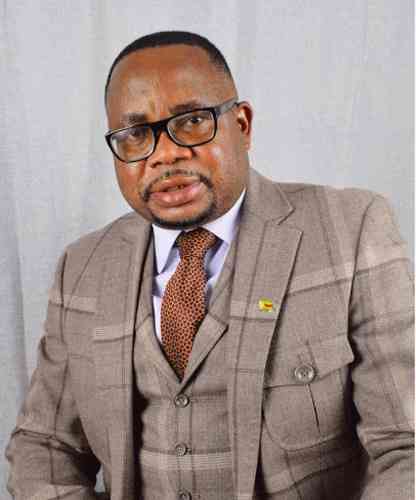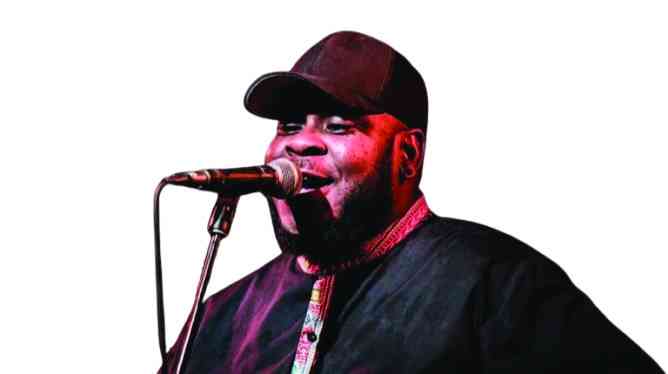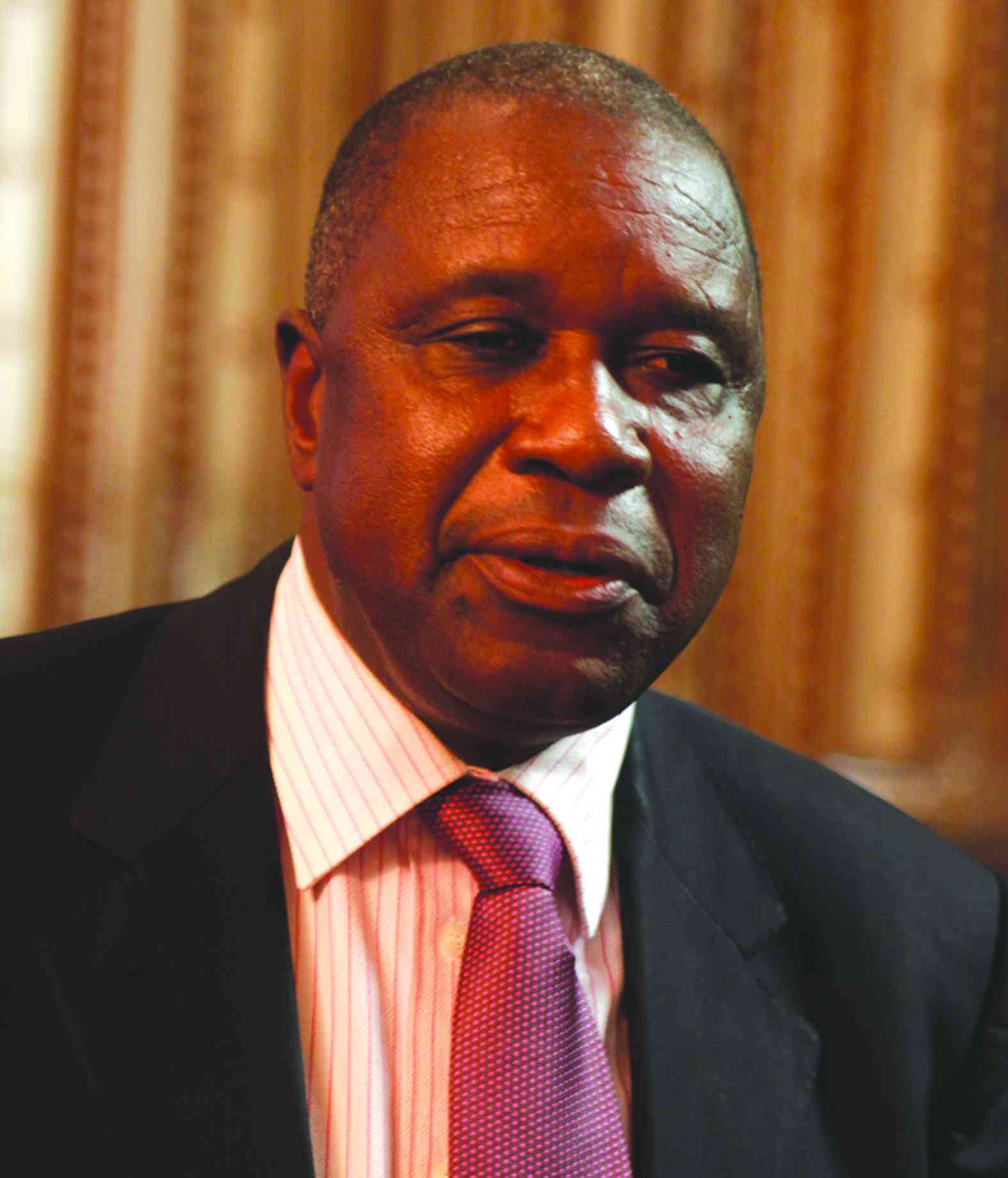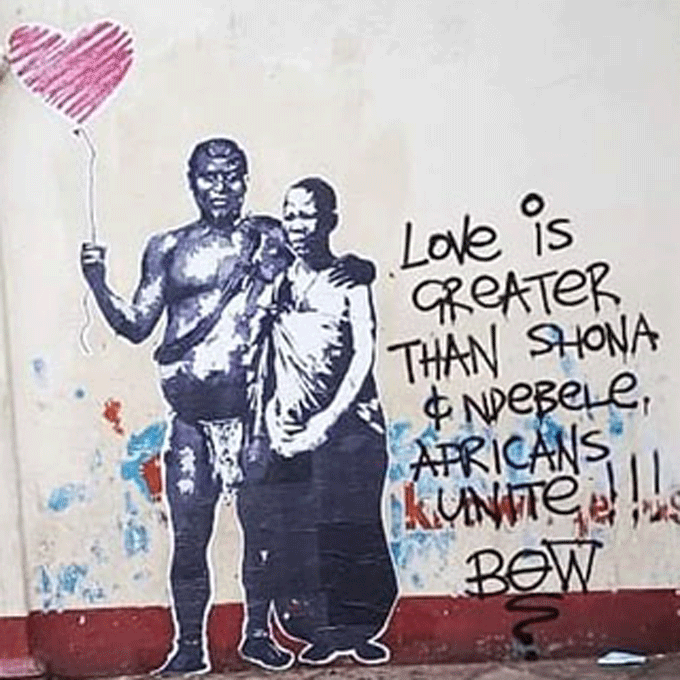
By Sindiso Dube
Bulawayo visual artiste Leeroy Spinx Brittain, popularly known as Bow, is at the centre of controversy after his mural depicting King Lobengula and Mbuya Nehanda in an intimate position torched a tribal storm.
The mural was painted on the toilet walls of Bulawayo City Council hall along Fife Street and Eigth avenue.
The mural depicted King Lobengula carrying a heart-shaped balloon while embracing Mbuya Nehanda and inscribed, Love is greater than Shona and Ndebele, Africans unite.
King Lobengula was the last Ndebele king. He ruled the Matabele Kingdom after the death of Mzilikazi in 1868, until the demise of the Kingdom in the mid 1890s.
Nehanda Charwe Nyakasikana, was a spirit medium of the Zezuru people. She was a medium of Mbuya Nehanda, a female Shona mhondoro (ancestral spirit). As one of the spiritual leaders of the Shona, she was one of the leaders of the revolt, the First Chimurenga, against the British South Africa Company’s colonisation of Zimbabwe led by Cecil John Rhodes in 1896-7.
The mural is Bow’s first piece of the year. Last year he was part of the Caligraph project which did murals for the late Cal_Vin, Mbo Mahocs, Sandra Ndebele and Sarah Mpofu Sibanda, among others.
Bow revealed that his intentions of the art piece were to unite people and fight tribalism that is deep-rooted in the country using the two icons Lobengula and Nehanda.
- Chamisa under fire over US$120K donation
- Mavhunga puts DeMbare into Chibuku quarterfinals
- Pension funds bet on Cabora Bassa oilfields
- Councils defy govt fire tender directive
Keep Reading
“In Matabeleland people give so much respect and honour to King Lobengula and in Mashonaland region it’s Mbuya Nehanda and what the piece means is a Shona and a Ndebele can love each other,” Bow said.
“As you can see, King Lobengula is hugging Mbuya Nehanda with a balloon with a heart.
“It’s just the lightest way for people to understand that people can love and live with each other. As we speak there are so many descendants of these two great people building families together and loving each other though we still have the tribalism movement going on. It brings us down as a country. Love is beyond tribes, let’s love each other.”
Bow felt as a nation there was need to find each other and move on from issues that are dividing people.
“Look at Rwanda, they have moved on and they are building their country together post genocide era,” he said.
“We can also do the same as Zimbabweans. Even myself as a coloured I have faced the challenges in so many places, where there is a stereotyping of coloured people. All this stereotype and tribalism is what’s bringing us down as a nation.
“Let’s look beyond tribes and come together, all I’m trying to do with the mural is bring awareness to people that love is beyond tribes and love can cover any wound and differences.”
The City Council staffers were seen erasing the mural on Monday after less than 24 hours of the painting. Bulawayo Mayor Solomon Mguni reportedly said the mural was illegal and the artiste must have sought clearance before painting on council walls.
A day after the mural was erased, Bulawayo woke up to graffiti on the same wall, inscribed, “Gukurahundi, we will not forget.” The graffiti text was in black with a splash of red paint insinuating bloodshed.
Gukurahundi resulted in the death of more than 20 000 people in Matabeleland and Midlands province, with many more displaced, mutilated and traumatised.
It was carried out by the North Korean trained Fifth brigade, Gukurahundi is derived from a Shona language term which loosely translates to “the early rain which washes away the chaff before the spring rains”.
In 1999, the late former president Robert Mugabe who was behind the skirmishes sensationally said: “Gukurahundi was a moment of madness’ without telling who was mad between him (the perpetrator) and the victims”.
“I have children at home and I wish they grow up in an environment full of love,” said Bow.
“I want to leave them a legacy of love not hatred because honestly with all the years I have lived not even one day has hatred built, we are artists and we all have our own views to express.
“I am not a politician but an artist. My number one aim is to address social issues positively with a solution of love and not to stir hatred and negativity.
“I call myself Bow, an abbreviation for black or white, being a coloured race made me experience both sides of the coin, I got Ndebele blood, I got German blood, I got Shona cousins and uncles. I was raised by a Ndebele grandmother and a Shona grandfather and because of that I realised we are all human beings, we are the same.”
Speaking on the Gukurandi graffiti on the walls, Bow said he was not focussed on that.
“I have nothing much to say about the Gukurahundi painting that came after mine. Whoever did that probably it was a reaction to what I had put on the wall, my ideology is more of peace and unity,” Bow said.
“I am not even focussed on Gukurahundi as I don’t even know what state the painter was in. What I did was about love, we don’t have Shona, Ndbele, Kalanga, Tonga but we have Zimbabweans in this country.
“I wish the City council could give us a platform and give us walls in the high density suburbs so that we can communicate and tell our stories.
“In other countries even in the first world countries they have such walls where artists do their works, I wish we can have that as well and also I am open for any stakeholder who is willing to work with me and other artists to tell our stories through art.”

